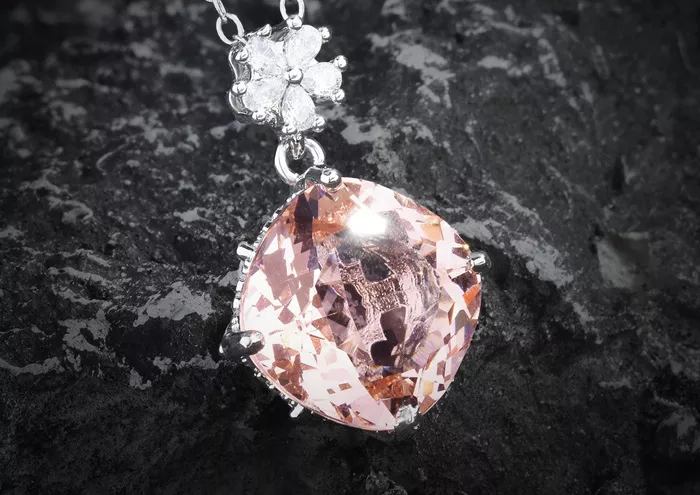Pink tourmaline is a beloved gemstone in the jewelry world. Its charming rosy hues attract many collectors and designers. But a common question often arises: Is pink tourmaline rare? This article explores the rarity of pink tourmaline in detail, diving into its formation, availability, and value in the jewelry market.
What Is Tourmaline?
Tourmaline is a group of minerals, known for their wide range of colors. This gemstone family includes green, blue, yellow, black, and pink varieties. Pink tourmaline is a member of this colorful spectrum.
Tourmaline crystals form in igneous and metamorphic rocks. They occur worldwide, but quality gem-grade stones are less common. Tourmaline is valued for its brilliance, durability, and color variety.
The Unique Appeal of Pink Tourmaline
Pink tourmaline’s soft to vibrant pink hues make it popular in jewelry. Shades can range from pale pastel pinks to intense magentas. These colors come from trace amounts of manganese in the mineral structure.
The gemstone’s natural luster and clarity enhance its beauty. Its hardness, around 7 to 7.5 on the Mohs scale, makes it suitable for daily wear. This combination of beauty and durability has made pink tourmaline a favorite among designers.
How Rare Is Pink Tourmaline?
To understand pink tourmaline’s rarity, we need to look at several factors:
1. Geological Occurrence
Pink tourmaline forms in specific geological environments. It is often found in granitic pegmatites, a rare type of igneous rock. These pegmatites provide the perfect conditions for large, high-quality crystals.
However, not all pegmatites produce pink tourmaline. The trace elements required for pink color are not present everywhere. This limits the natural sources of pink tourmaline.
2. Mining Locations
Major sources of pink tourmaline include Brazil, Afghanistan, Madagascar, Mozambique, and the United States (California and Maine). Some of these mines are small and have limited production. Others produce stones of varying quality.
The limited number of productive mines affects availability. When mines run low or close, supply decreases, making pink tourmaline more difficult to find.
3. Gem Quality vs. Bulk
Pink tourmaline can be found in large quantities, but gem-quality stones are much rarer. Gem quality means clear stones with vivid color and few inclusions. Many pink tourmaline crystals are included or pale, which reduces their value.
4. Market Demand
Demand influences perceived rarity. Pink tourmaline has gained popularity in recent years. Its use in fine jewelry and high-end pieces has increased demand. This growth has put pressure on supply.
Comparing Pink Tourmaline to Other Pink Gemstones
To grasp pink tourmaline’s rarity, it helps to compare it with similar pink stones:
- Pink Sapphire: Usually rarer and more expensive than pink tourmaline. Pink sapphires come from corundum, a harder mineral.
- Morganite: Often more available and softer than tourmaline. Morganite is valued for its peachy-pink hues.
- Spinel: Pink spinel can be rare and pricey, sometimes confused with pink tourmaline.
- Rose Quartz: Abundant and inexpensive but less vibrant.
Compared to these stones, pink tourmaline falls in the middle range. It is not as rare or costly as pink sapphire, but it is rarer and more valuable than rose quartz.
Factors Affecting Pink Tourmaline’s Value and Rarity
Several factors affect how rare and valuable pink tourmaline is:
Color Intensity
Vivid, saturated pinks with little to no brown or orange hues are the most prized. Stones with pure, bright pink colors are much rarer.
Size
Large pink tourmaline crystals of good quality are scarce. Bigger stones are much more valuable and harder to find.
Clarity
Clear stones without visible inclusions command higher prices. Inclusions are common in tourmaline and reduce value.
Cut
Expert cutting enhances color and brilliance. Well-cut stones appear more vibrant and are more desirable.
Origin
Some origins are more sought after. For example, pink tourmaline from Brazil or Madagascar may be more valued due to their quality.
The History and Popularity of Pink Tourmaline
Pink tourmaline has a rich history. It was popular in the Victorian era and the Art Deco period. Its popularity declined mid-20th century but resurged recently due to a growing interest in colored gemstones.
Famous jewelers often use pink tourmaline in statement pieces. Its romantic color appeals to bridal and fashion markets.
How to Identify Authentic Pink Tourmaline
Due to its popularity, synthetic and treated stones appear in the market. Buyers should know how to identify natural pink tourmaline.
- Hardness test: Tourmaline’s hardness is 7–7.5.
- Color zoning: Natural stones may show color variations inside.
- Inclusions: Typical tourmaline inclusions help confirm authenticity.
- Refractive index and specific gravity: These tests are performed by gemologists.
Caring for Pink Tourmaline Jewelry
Pink tourmaline is durable but should be cared for properly.
- Avoid harsh chemicals and extreme temperature changes.
- Clean with mild soap, water, and a soft brush.
- Store separately to avoid scratches.
Proper care maintains the stone’s beauty and value over time.
Investment Potential of Pink Tourmaline
Is pink tourmaline a good investment? While it is less expensive than diamonds or sapphires, high-quality stones can appreciate in value. Limited supply and rising demand contribute to its investment potential.
Collectors often seek rare colors and large, flawless stones. Pink tourmaline with excellent provenance and cutting can be a valuable asset.
Conclusion
Pink tourmaline is moderately rare in the world of gemstones. It is not as scarce as some precious stones but is certainly more unique than many common gems. Its rarity is influenced by geological factors, mining limitations, and demand.
For jewelry lovers, pink tourmaline offers a beautiful, durable, and affordable option with an attractive color palette. Whether worn as a statement piece or collected as an investment, pink tourmaline continues to enchant the jewelry world.
Related topics:
- The Best Pink Tourmaline: A Designer’s Guide
- Botswana’s Diamond Industry Cuts Production Amid Falling Global Demand
- Five jewelry crimes to watch out for this summer


